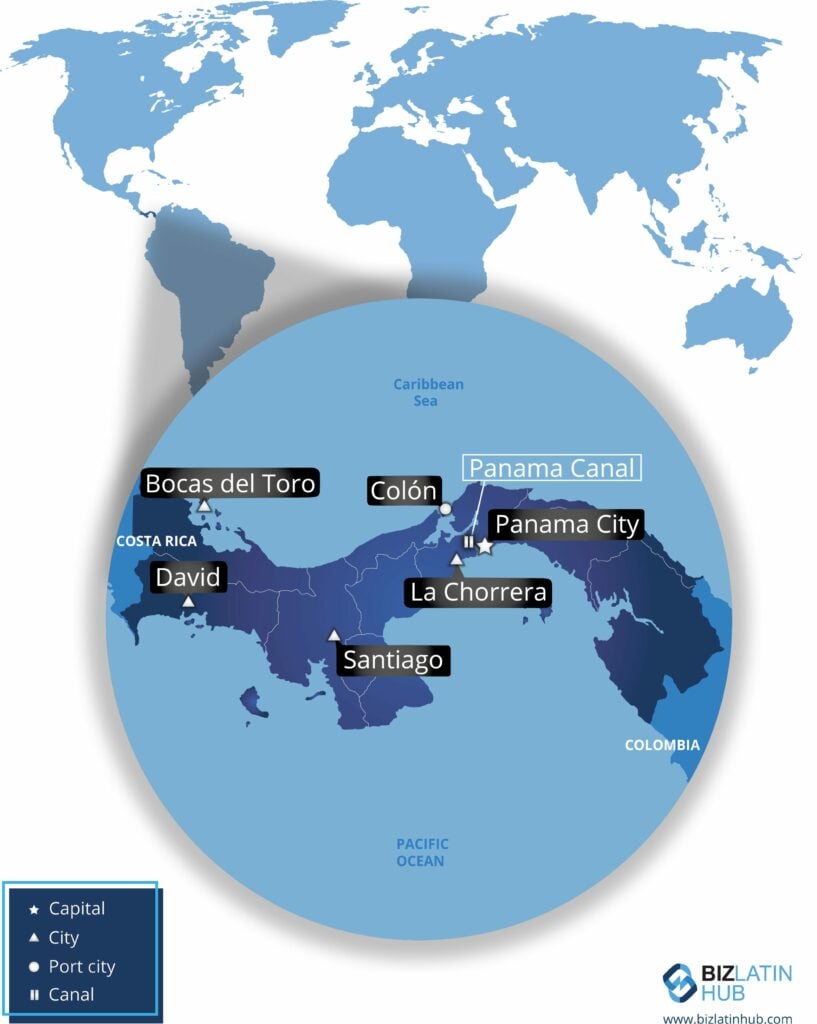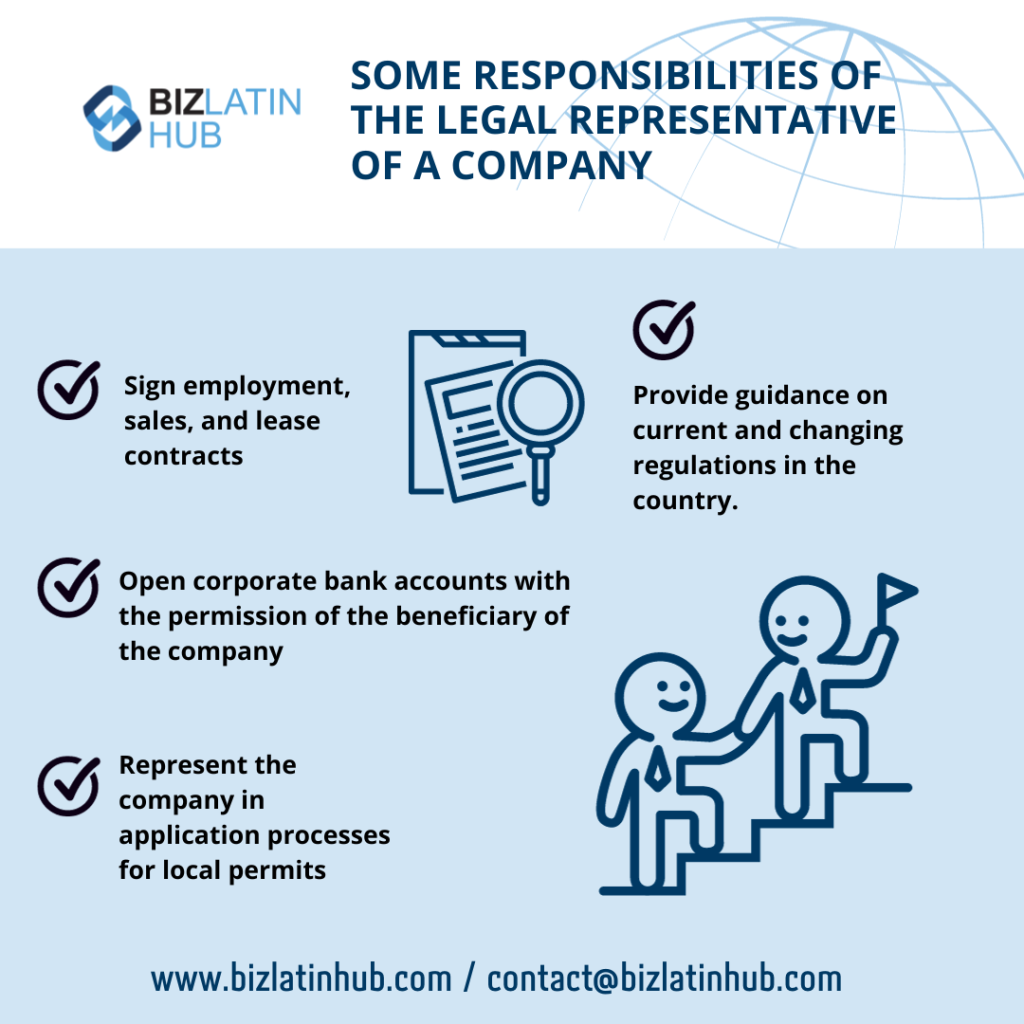Find out the necessary steps to dissolve and liquidate a company in Panama.
Because of the commercial benefits that Panama has to offer foreign businesses, the country supports one of the highest rates of newly established companies in Latin America. In 2019, 26,000 legal entities were established in Panama – an increase of 4.7% in relation to the companies established in 2018.
Despite the support the country and its special economic zones offer business, companies may choose to exit the market through a liquidation procedure.
A company in Panama might go into liquidation in the following cases:
- Voluntary dissolve of the company
- Involuntary dissolve of the company by bankruptcy
In Panama it’s important to complete this process to end operations, to avoid governmental or commercial debts. If the process is not completed this would set a bad credit history for the company and its shareholders in Panama, and complicate further business in the country.

Table of Contents
How to dissolve a company in Panama
Before you can liquidate the assets of your company in Panama, you must first go through a dissolution process complying with all governmental authorities, The government entities responsible for the dissolution of a company in Panama are the:
- Public registry (Registro Público de Panamá)
- National Tax Authority (Dirección General de Ingresos)
- Ministry of Commerce (Ministerio de Comercio e Industrias) – this is if the company conducted commercial activities within Panama
- Social Security (Caja del Seguro Social) – if the company managed employees in Panama.
There are two ways to liquidate a company in Panama: through voluntary and involuntary procedures.
According to the Panama Commercial Code, the conditions to dissolve and liquidate a company are:
- Expected cases established in the bylaws of the company.
- Unanimous agreement between the shareholders.
- Completion of the purpose which the company in Panama was originally established.
- By loss of the purpose for which the company was originally incorporated, or the impossibility of such achievement.
- By the merge with other legal entities.
- By Judicial order.
The most common method to dissolve a company in Panama is by shareholder agreement. The company must register this agreement at the Public Registry of Panama. It must then register the formal dissolution at the National Tax Authority of Panama.
Once completed, the company can proceed with the liquidation process in Panama.
Process to liquidate a company in Panama
Usually, the liquidation process of a company is established in the bylaws of the company, in private documents like general shareholders meetings or legal agreements. When the process is not established by previous private documents, the company will need to follow the process established in the commercial code of Panama.
Liquidation process for an S.A. company in Panama
The corporation (Sociedad Anónima or S.A.) is the most common type of legal entity incorporated in Panama. S.A. corporations have 3 years to complete the liquidation process in Panama once the decision to liquidate has been made. This includes the transfer of assets, capital division, and organizing any additional arrangement through legal means. During the liquidation procedure, the company may continue to conduct business and continue operations.
The directors of the S.A. company will act as trustees and will have the following functions:
- Settle the pending company affairs,
- Collect the company credits,
- Sell or transfer company assets,
- Divide the assets of the company in Panama among the shareholders
- Initiate and represent the company in legal proceedings,
- The directors of the company will be responsible for its debts, but only up to the amount of the assets and funds that the directors have acquired.

Steps to liquidate other legal entities
Regarding all other types of legal entities in Panama, such as Limited Liability Company (Sociedad de Responsabilidad Limitada) or Partnerships (Sociedades Colectivas) the liquidation process is as follows:
- Appointment of liquidator of the company: The person appointed as a liquidator will need to be registered at the public registry of Panama. The appointment of the liquidator will be requested by the shareholders of the company to a court of law.
- The Administrators of the company must deliver to the liquidator all documents related to the company’s inventories, accounting books, company obligations and other information related to the company’s assets or credits in order to start the liquidation process in Panama.
- The liquidator will have 60 days from the date of their appointment to document the state of the company according to the balances delivered by the administrator.
- The liquidator will set a term (no less than 60 days) for any creditor claim any debts the company in Panama may have.
- The liquidator must present to the shareholder of the company the following documents:
- The exact amount of the assets and liabilities of the company
- The way in which the debts of the company were paid
- The measures taken to preserve the books of the company.
- Prepare a final act including all liquidation and partition accounts of the company
To finalize the judicial liquidation process in Panama, the shareholders must approve the act presented by the liquidator and register it in the Public Registry of Panama.
Obligations of the liquidator during the liquidation process in Panama
When liquidating a company in Panama, the liquidator will have the following obligations also established by the Panamanian Commercial Code. These obligations include the following:
- Safeguard the assets of the company
- 15 days after their appointment, the liquidator must present the company’s balance sheets and accounts to the shareholders of the company in Panama
- Finish all commercial operations of the company
- Sell the assets of the company in Panama
- Maintain a registry book of all the operations related to the liquidation of the company in Panama
- Complete all the company’s remaining obligations
- Send a monthly report of the liquidation process of to the shareholder of the company in Panama
- Take all necessary legal actions on behalf of the company
- Complete transactions and represent the company to complete the liquidation process.
Common FAQs for Liquidating an entity in Panama
Based on our extensive experience these are the common questions and doubts of our clients when liquidating a local entity
Shareholders’ Meeting: The company’s shareholders convene a meeting and approve the decision to dissolve the company and initiate the liquidation process.
Appointment of Liquidator: A liquidator is appointed, who can be a third party or the company’s legal representative. The liquidator is responsible for managing the liquidation process.
Notice to Authorities: Formal notice of the company’s decision to dissolve and liquidate must be sent to the Public Registry and other relevant authorities.
Publication of Notice: A notice of the company’s dissolution and liquidation is published in a newspaper to inform creditors and other interested parties.
Asset Liquidation and Debt Settlement: The company proceeds to liquidate its assets and settle its debts, ensuring proper distribution of funds to creditors.
Employee Settlement: Settlement of employee obligations, including payment of wages, severance, and other entitlements in accordance with labor laws.
Account Closure and Tax Compliance: Closure of the company’s accounts and fulfillment of tax obligations, including the submission of final tax returns.
The liquidation process will normally take between (6) and (12) months, assuming the entity is in good standing and no rectification work is required.
Liquidate your company in Panama with Biz Latin Hub
The process of dissolving and liquidating a company in Panama is complex, and requires the support of expert legal professionals.
At Biz Latin Hub, you receive the highest quality support from a bilingual team of legal experts to complete all necessary processes to close your company in Panama. We’ll guide you through your company’s liquidation while complying with all government regulations and authorities in Panama.
Contact us to find out more about how we can support you for more information.
Learn more about our team and expert authors.

The information provided here within should not be construed as formal guidance or advice. Please consult a professional for your specific situation. Information provided is for informative purposes only and may not capture all pertinent laws, standards, and best practices. The regulatory landscape is continually evolving; information mentioned may be outdated and/or could undergo changes. The interpretations presented are not official. Some sections are based on the interpretations or views of relevant authorities, but we cannot ensure that these perspectives will be supported in all professional settings.